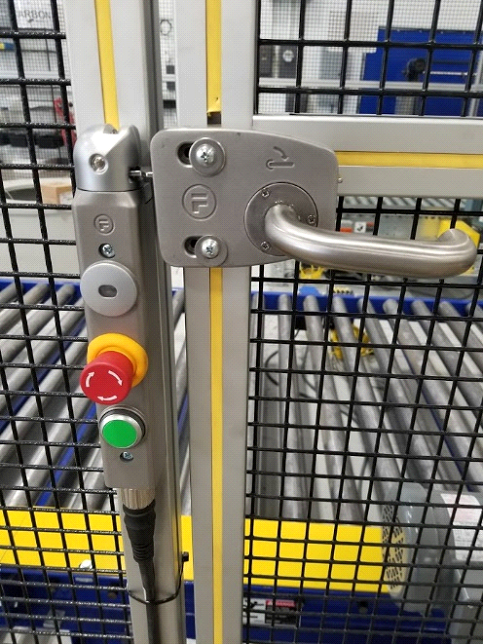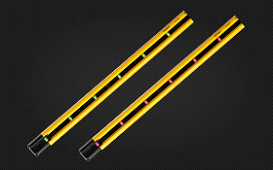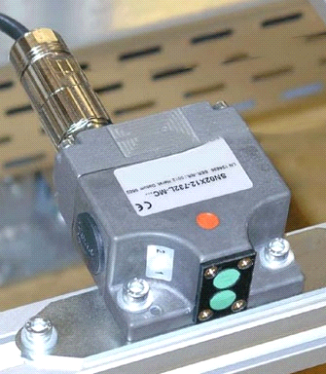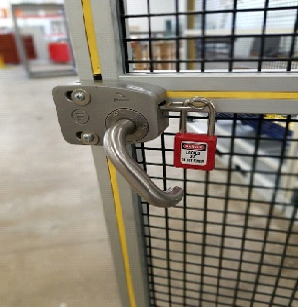General Safety Information
Safety Precautions
Before using the HIVE Autonomous Mobile Robot (AMR) system, it is important to understand its safety features, and how to safely use and maintain the system.Always lockout control power before performing maintenance on the AMR, and follow all of your company’s safety procedures regarding automation. It is the responsibility of each person using the AMR to understand the safety features and limitations before use. If you are unsure how to complete a given task safely, please seek further information and/or training.
Safety Circuit
Safety is monitored by the OTTO AMR, which utilizes a a dual channel, cross talk monitored safety device that ensures that the system is safe, and that the safety circuit is functioning at all times. Any of the emergency stops will stop and apply brakes to the robot servos, and drop all control voltage to the AMR conveyor.
If operation is stopped by a safety device, and clearing said safety devices cannot be done without moving the AMR, the safety circuit may be bypassed with the manual control pendant.
Safety Devices
⦁Emergency Stops
Many CARBON Palletizing cells are provided with one or more access gates. We utilize Fortress safety hardware in these situations that contain rotary actuated gate switch and handle, a twist reset emergency stop button, as well as a “pause request” button. Either rotating the handle, or pressing the e-stop button will immediately stop the robot and conveyors. If it is not an emergency, the preferred method is to request entry via the pause button, and wait for the robot to pause (not covered here).

⦁Area Scanners/LIDAR
Anywhere pallet loads are entering or exiting the cell, light curtains will be installed in order to protect unintended entry into the cell. FOCUS uses Keyence GL-R light curtains with full length indicator lights. Anything to break the plane of the light curtain larger than 1 inch will e-stop the cell. For this reason, it is important not to accidentally wave anything through the light curtains. Keep your hands close to your body when near the light curtains to avoid accidental e-stops.

⦁3D Perception Cameras
Anywhere pallet loads are entering or exiting the cell, light curtains will be installed in order to protect unintended entry into the cell. FOCUS uses Keyence GL-R light curtains with full length indicator lights. Anything to break the plane of the light curtain larger than 1 inch will e-stop the cell. For this reason, it is important not to accidentally wave anything through the light curtains. Keep your hands close to your body when near the light curtains to avoid accidental e-stops.

Safety Zones
Any time safety is violated, or a fault in the safety circuit is detected, the system will e-stop, removing control power from the system, as well as stopping and applying brakes to the servos. The safety condition must then be resolved, acknowledged, and drives and control power reset.
In addition to the standard safety circuit and controls, CARBON palletizing systems utilize KUKA.SafeOperation software and hardware. This combination allows for reduced cell size by creating safety rated spaces for the robot to operate, and in some instances allow for interaction in the cell by operators while the robot continues working using HRC principals and standards. In order to provide these controls, the robot will periodically test that its brakes are performing within normal limits, and that its positional data is accurate by measuring itself against a sensor at a known location. These tests are run any time the cell is powered down, and at pre-defined timed intervals.

Locking Out Power
⦁Battery Power
Locking out control voltage is done at any of the lockable e-stops. Typically, this is at one of the gates. When the gate handle is open, a lock hasp is presented in order apply a lock. While the gate is unable to latch, the system cannot provide output power to the robot or conveyors without bypassing the safety circuit.
